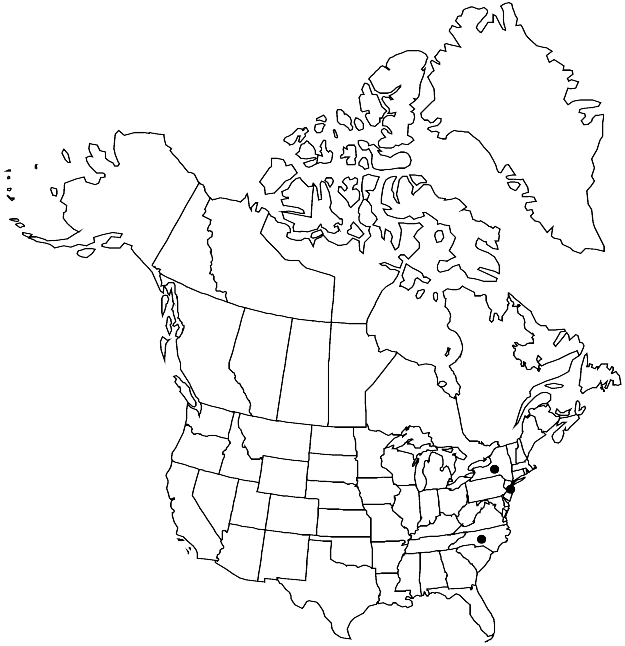Difference between revisions of "Anomodon thraustus"
Nuovo Giorn. Bot. Ital., n. s. 5: 207. 1898.
FNA>Volume Importer |
FNA>Volume Importer |
(No difference)
| |
Revision as of 22:06, 16 December 2019
Plants small, in loose mats, dark when dry, bright green when moist. Stems 1.5–3 cm, 0.5–1 mm thick when dry, somewhat densely branched, primary branches erect to ascending, julaceous when dry; central strand cells differentiated; pseudoparaphyllia absent; rhizoids few. Branch leaves slightly crisped, incurved when dry, secund, reflexed, not complanate when moist, ligulate, 1.2–1.8(–2.1) mm; base ovate; margins plane, not papillose-crenulate at insertion; apex obtuse to rounded, often broken off; costa moderately strong, ending much before apex, obscured by laminal cells distally, light green, abaxial costa cells papillose, papillae large, in rows; basal laminal cells many, pellucid, smooth, region reaching margin, to 1/2 basal portion of lamina or beyond; medial and distal cells hexagonal, 6–11 µm, papillae many, branched. Perichaetia on terminal branches, beyond distalmost branching points, near apices, leaves with laminal cells papillose. Sporophytes unknown.
Habitat: Bark of trees, deciduous forests
Elevation: moderate elevations
Distribution

N.J., N.Y., N.C., Mexico (Hidalgo, Jalisco, San Luis Potosí), Asia.
Discussion
Of conservation concern.
Anomodon thraustus resembles A. minor but can be distinguished by the more delicate habit, thinner branches, differentiated central strand of smaller cells, and incurved or crisped leaves that become widely spreading when moist rather than complanate. The stems are sometimes irregularly pinnate. Leaves of A. thraustus are narrow with broken apices, similar to those of A. tristis, and the costa is obscured by laminal cells distally. The delicate, narrowly ligulate distal leaf of A. thraustus is distinct; that of A. minor is wider and shorter. Anomodon thraustus has been considered an East Asian species, but isolated records from central Mexico exist (L. J. Gier 1980). All North American (and most Mexican) specimens of this taxon have been misidentified as A. minor (and could also be mistaken for A. tristis). Although it is a rare species, the presence of A. thraustus in the New World has been overlooked. The disjunct distribution of A. thraustus parallels that of A. minor, although in the New World A. thraustus is somewhat more southerly in range.
Selected References
None.